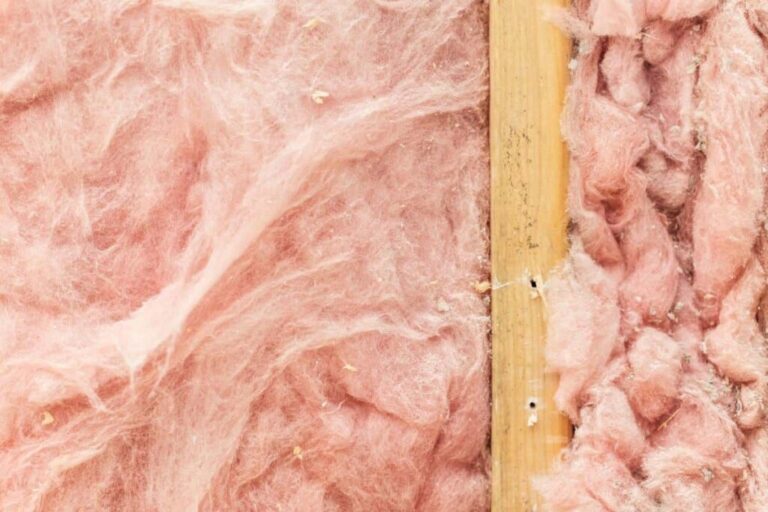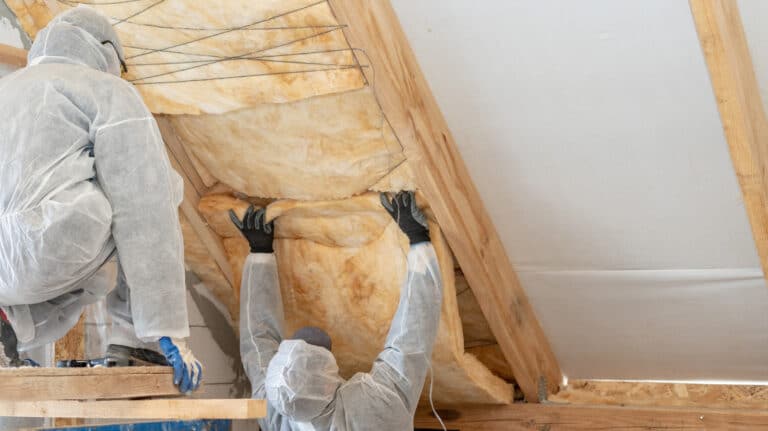Sustainable Materials – Fiberglass Insulation
Last week we started a series of blog posts on insulation starting with cellulose, this week we continue our discussion turning our attention to fiberglass.
Advantages of Fiberglass Insulation
Fiberglass insulation is one of the most popular and cost-effective types of insulation available in the market.
Fiberglass insulation has been used since the 1938, but it wasn’t until the energy crises of the 1970’s that fiberglass use became widespread. Insulation installers and home DYIers will often install fiberglass as batts with or without a paper/asphalt backing. Batts are inexpensive and easy to install; however, gaps between the insulation and the framing joists or studs are common, which reduces the insulation’s effectiveness. Installers can also install fiberglass as loose fill blown in through a large hose, which virtually eliminates any gaps.
Fiberglass batts generally have an R-value of 3.3 per inch thickness, while loose fill fiberglass has an R-value of 3.0/inch. Special high-density fiberglass batts can achieve R-values up to 4.3/inch. To achieve code minimum insulation in the ceiling (R-value=49) along the Colorado front range, you’d need 16.5 inches of blown-in fiberglass. The fiberglass insulation costs about $1.77 per SF at the big box stores, plus installation. For better performance, we’d want to consider R-60 to R-70, or more.
Fiberglass also has the advantage of not being flammable. It will not burn, although it can melt at temperatures above 1000°F. However that said, the paper backing that is often applied to fiberglass batts is flammable. Properly installed, fiberglass insulation can go a long way towards making your home fire resistant.
Is fiberglass green and sustainable?
Many fiberglass manufacturers use recycled glass bottles and jars for their feedstock. So, the fiberglass can be sustainable, but it depends on what brand you are buying and where you live as to whether the fiberglass was from recycled glass or not. Owens Corning claims to recycle more than one billion pounds of glass per year, kudos to them. But that’s just the fiberglass itself – manufacturers also use various chemicals to bind the fibers together and impart other properties to the insulation. Overall, is fiberglass green and sustainable? It’s complicated.
Disadvantages of Fiberglass Insulation
The R-value of fiberglass is relatively low, meaning that to achieve high performance, you’ll need very thick insulation. Although fiberglass itself does not absorb moisture, it can trap moisture inside walls and ceilings, leading to mold growth and structural damage.
Fiberglass irritates the skin, eyes, and lungs
During the installation process (likewise for removal), microscopic fibers of fiberglass can become airborne. Improperly installed or improperly maintained HVAC systems can accumulate dust and debris and spread those glass particles around the entire house. If inhaled, fiberglass insulation can cause health problems, such as persistent coughing or difficulty breathing. People with respiratory problems, such as asthma, may experience heightened sensitivity. People working with fiberglass should absolutely wear respirators.
The tiny glass fibers can irritate the skin and eyes, leading to itching and rashes. People with sensitive skin may experience allergic reactions. People handling fiberglass should wear long sleeve shirts and pants, gloves, and eye protection.
Other chemicals
The other hazard associated with fiberglass insulation are the chemicals used during its manufacture. Methyl ethyl ketone peroxide (MEKP) is an organic peroxide used to catalyze the raw resin. MEKP is a severe skin irritant, respiratory irritant, causes blindness, and it’s also corrosive plus explosive (nice stuff). Fiberglass manufacturers also use cobalt compounds as accelerators, which can result in allergic dermatitis or asthma-like conditions. The important thing to know about these lovely chemicals is, proper safety equipment is vital to maintaining healthy lungs, skin, and eyes.
Safety Equipment
For homeowners and general contractors, hire installation (or demolition) crews that are properly and fully trained and are actually using appropriate safety equipment.
Summary
How green, sustainable, and healthy is fiberglass? If the fiberglass manufacturer is using recycled glass, then fiberglass can be considered sustainable. But not every manufacturer is using recycled glass to make their fiberglass.
For more information, please schedule your free consultation.


